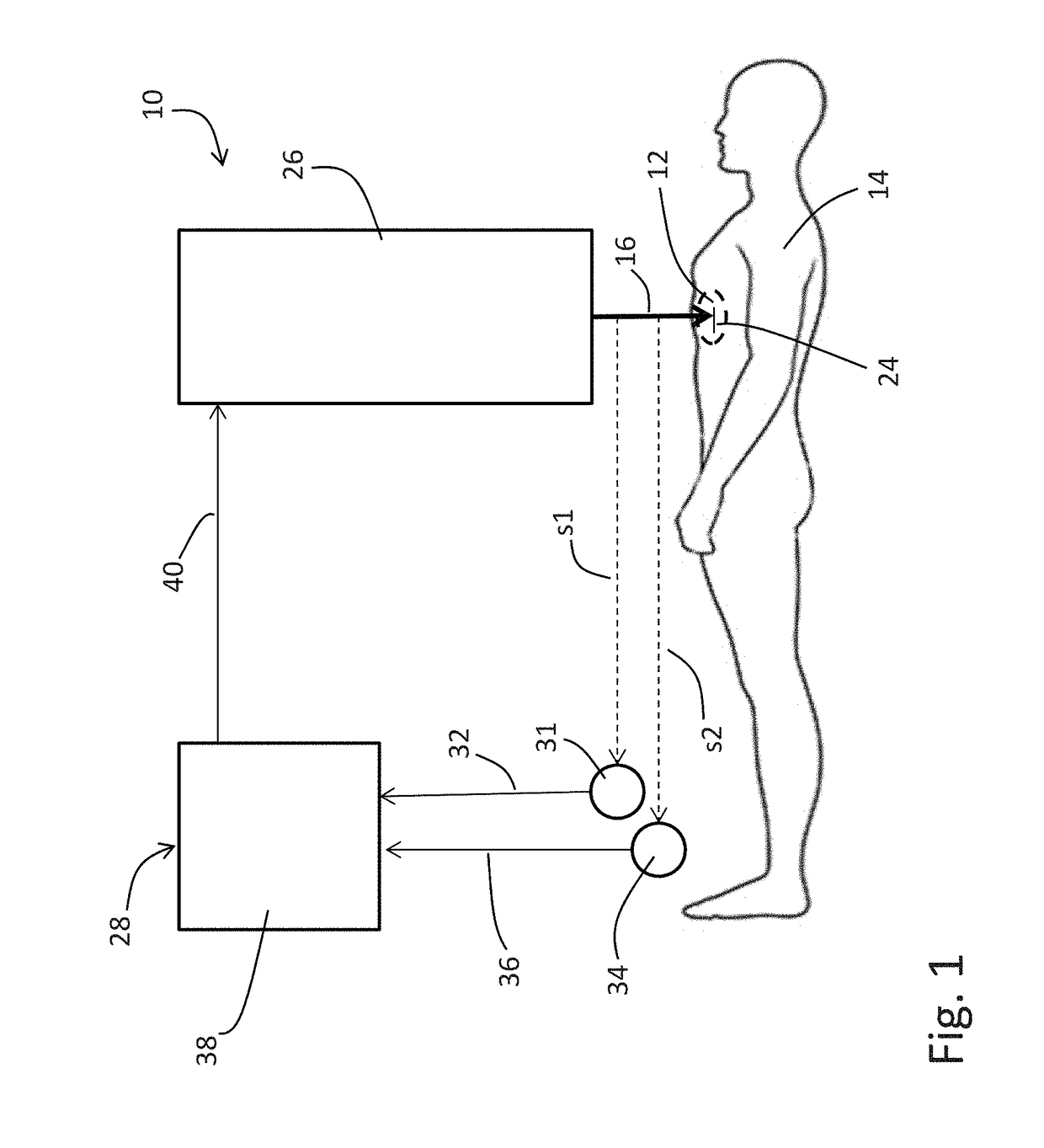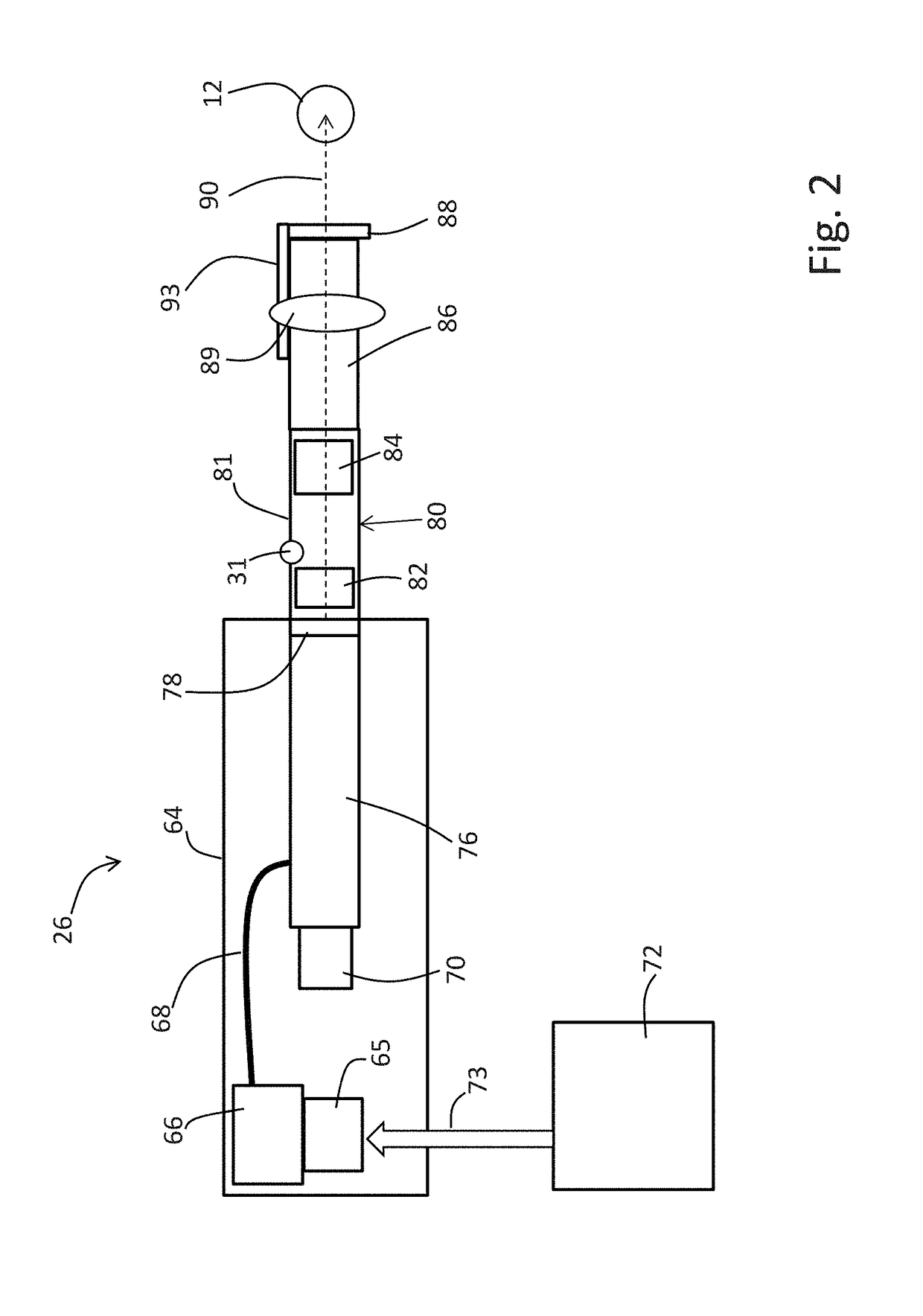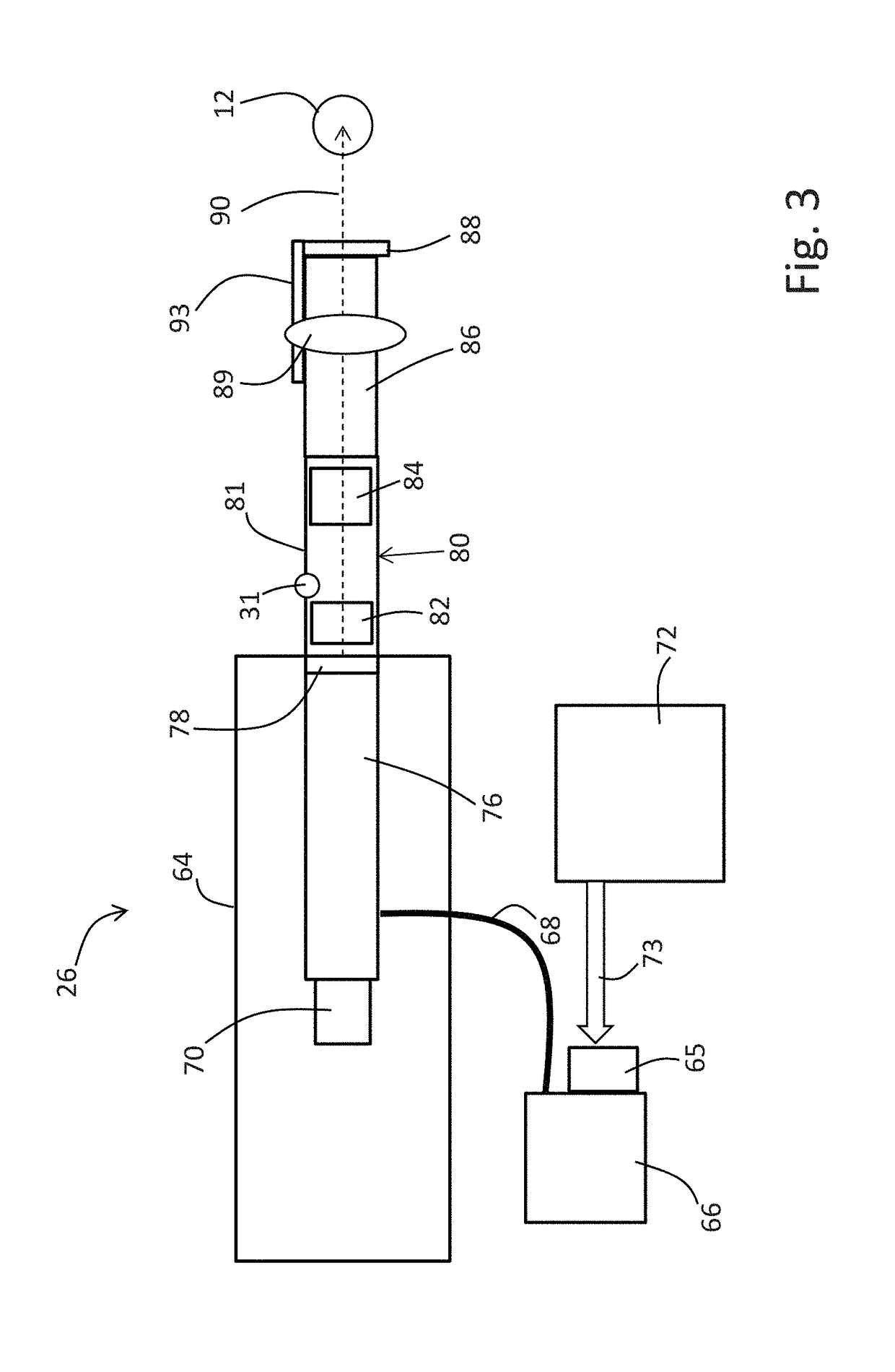Low energy electron beam radiation system that generates electron beams with precisely controlled and adjustable penetration depth useful for therapeutic applications
a radiation system and electron beam technology, applied in radiation therapy, x-ray/gamma-ray/particle irradiation therapy, radiation therapy, etc., can solve the problems of difficult feedback control measurement of electron beam spectrum and limited penetration depth adjustment by conventional machines, so as to improve stability and precision, the effect of reducing the energy of electron beams and convenient deploymen
- Summary
- Abstract
- Description
- Claims
- Application Information
AI Technical Summary
Benefits of technology
Problems solved by technology
Method used
Image
Examples
example 1
[0175]FIG. 12 shows plots of percentage depth dose versus depth in water for various low energy electron beams where the electrons were produced using a Van de Graaff machine (from Gerald J. Hine and Gordon L. Brownell, Radiation Dosimetry, Academic Press, 1956).
[0176]The following Table 1 shows the corresponding R80 penetration depths at different energy levels in water.
TABLE 1R80 depth (millimeters)Electron beam energy (MeV)1.30.52.51.04.82.07.43.0
Note that for electron radiation, the dose just below the surface increases to a maximum value and then falls sharply as the water attenuates the radiation. The data shows that penetration depth in a water phantom correlates strongly to energy level. For example, if the distal R80 penetration depth is plotted against the energy using the data in Table 1, the resultant data is highly linear.
example 2
Effect of Field Flattening Device
[0177]One purpose of scattering foils is to flatten and thereby provide an approximately uniform exposure of radiation to the target site. FIG. 13 illustrates the dose distribution measured perpendicularly to the beam axis. The peaked curve shows field strength prior to flattening. The other curve shows the flattened profile of the electron beam, which provides a more uniform dose distribution over a greater range of off axis positions.
example 3
[0178]FIG. 14 shows percent depth dose as a function of penetration distance in water for 2.1 MeV electron beam system equipped with a 4.5 cm diameter applicator at a 5 cm distance (i.e. gap) from the target surface. Curves are shown for the open 4.5 cm applicator, a 4.5 cm applicator with a 3 cm slit, and a 4.5 cm applicator with a 1.7 cm slit. The slit material is fabricated from DRAIN polymer. For each curve, the surface dose (Io) and the depth of the 90%, 80% and 50% doses are indicated. Note that a slit width less than 3 cm will elevate the surface dose. This data shows that there is a trade-off between slit width and surface dose. If it is desirable to reduce the surface dose, the slit width may need to be larger than the minimum width needed to cover the target.
PUM
 Login to View More
Login to View More Abstract
Description
Claims
Application Information
 Login to View More
Login to View More - R&D
- Intellectual Property
- Life Sciences
- Materials
- Tech Scout
- Unparalleled Data Quality
- Higher Quality Content
- 60% Fewer Hallucinations
Browse by: Latest US Patents, China's latest patents, Technical Efficacy Thesaurus, Application Domain, Technology Topic, Popular Technical Reports.
© 2025 PatSnap. All rights reserved.Legal|Privacy policy|Modern Slavery Act Transparency Statement|Sitemap|About US| Contact US: help@patsnap.com



